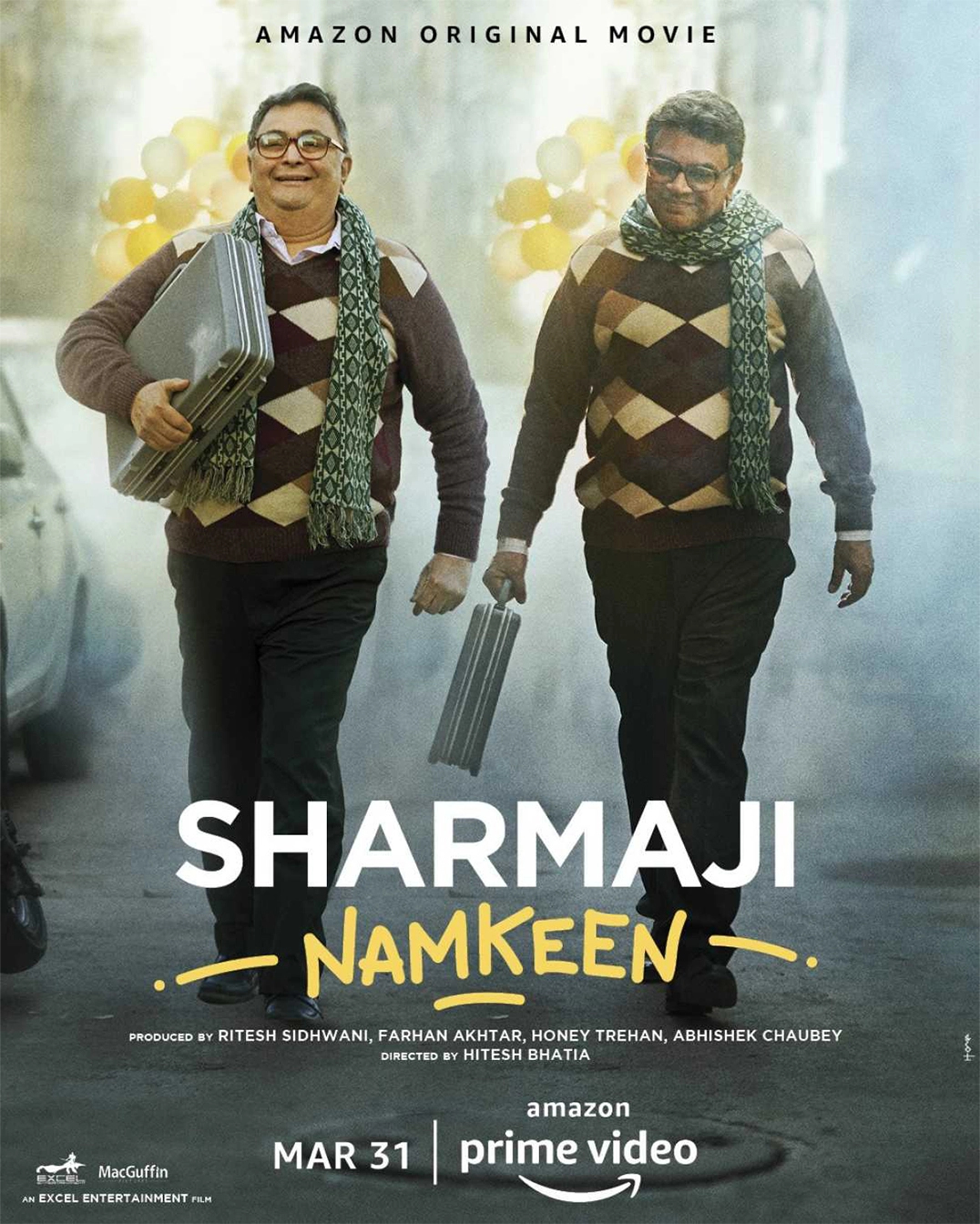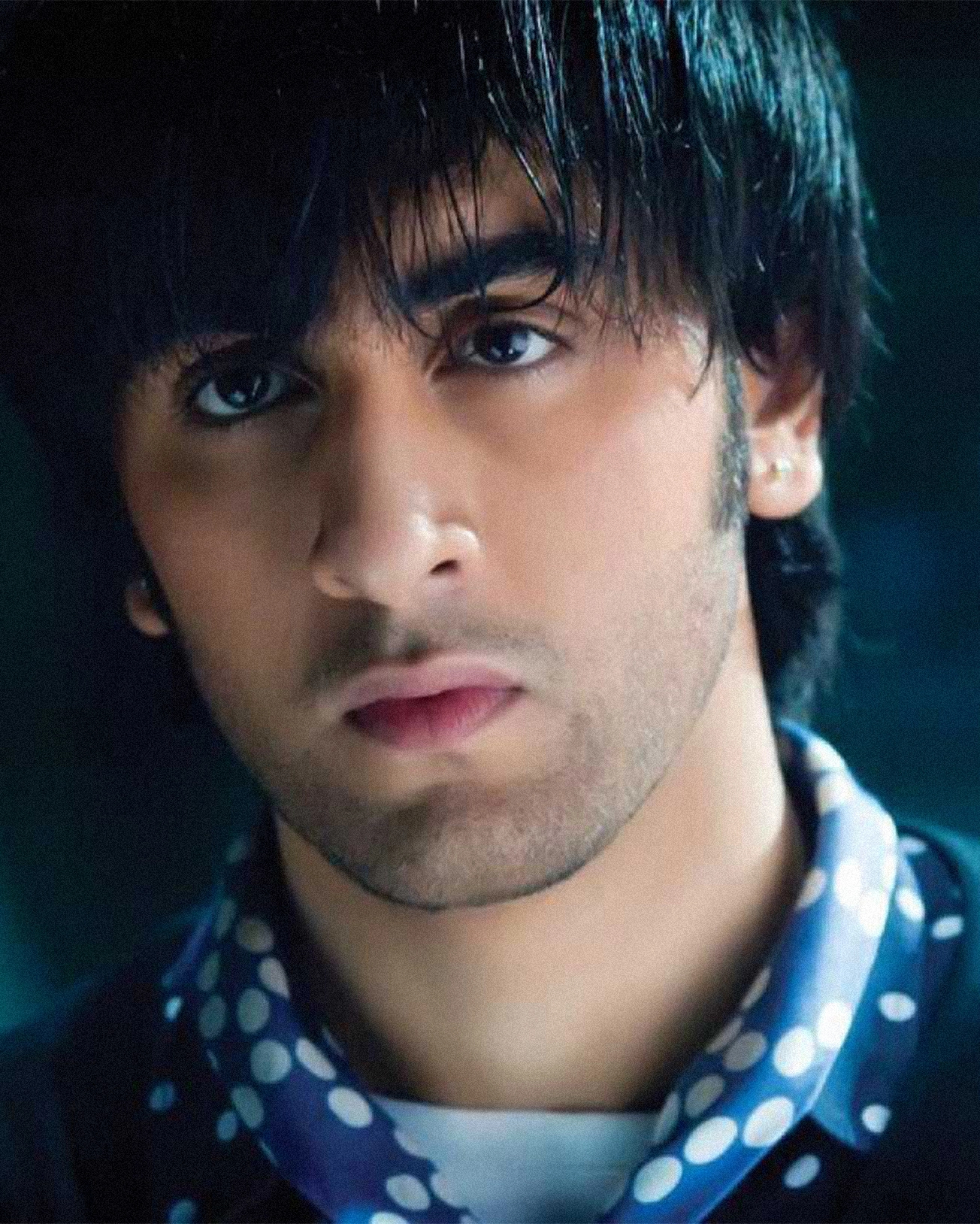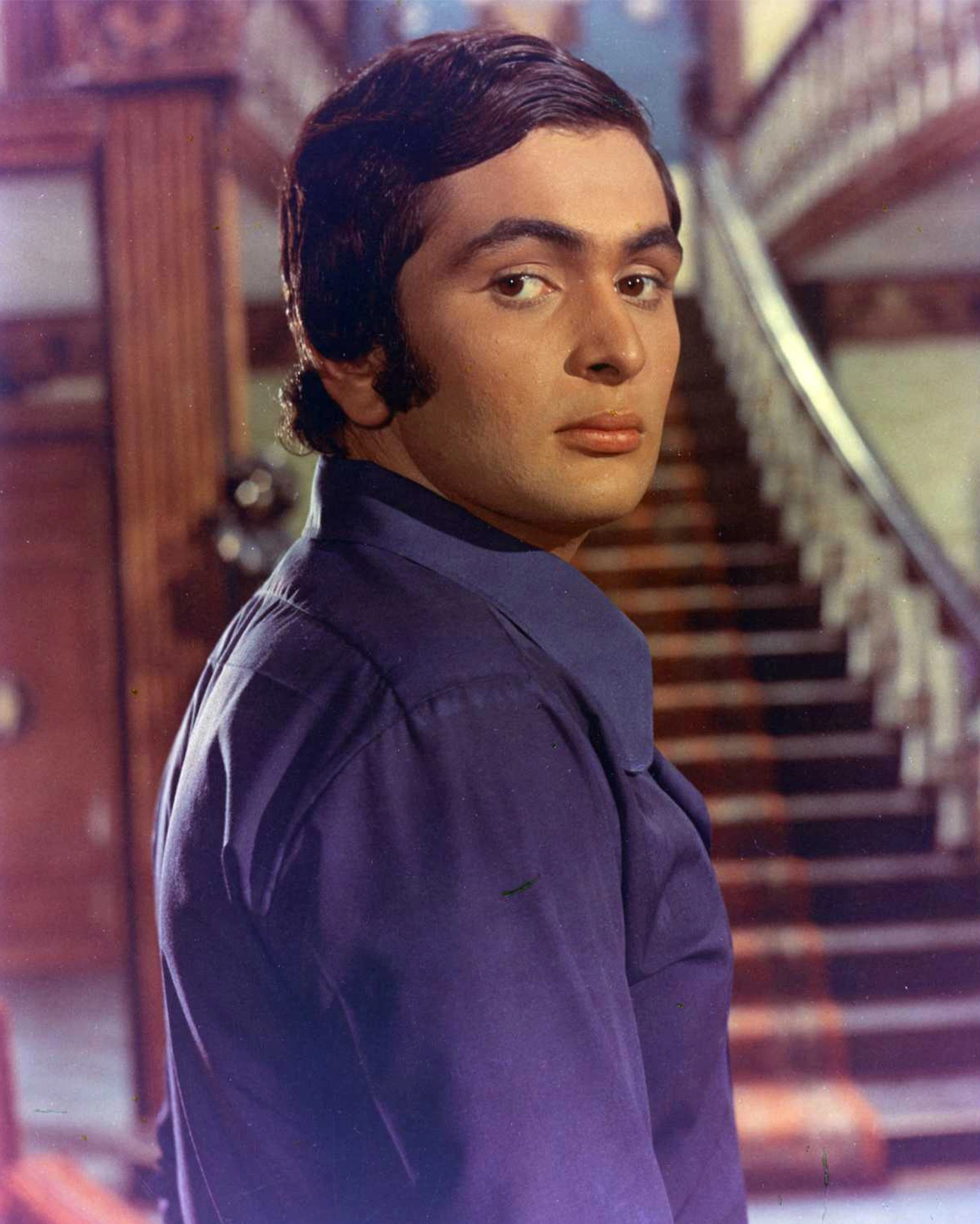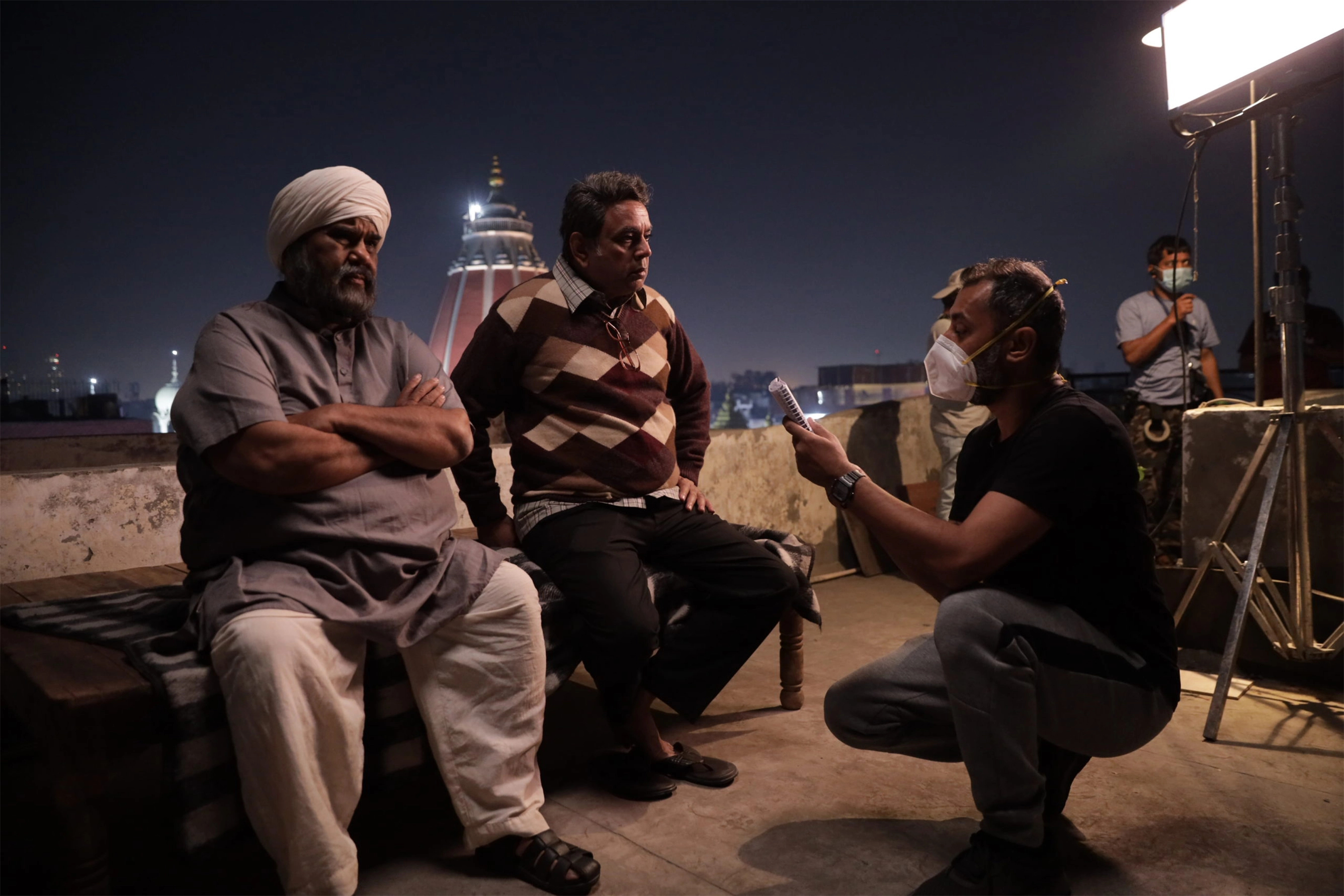A Family Affair
In Sharmaji Namkeen, Paresh Rawal played the role of Rishi Kapoor, who passed away unexpectedly during filming. We consider the willing acceptance of this unconventional solution and what it says about Indian spectatorship, celebrity culture and the audience’s relationship with Bollywood’s “first family”

“Hi! I’m here to share something that makes Sharmaji Namkeen a very special film. Yeh film mere liye khaas sirf isliye nahin hai kyunki ye Papa ki last film hai [the film is special to me not only because it is Papa’s last film] but Papa really believed in the story.”
The camera zooms in on Ranbir Kapoor in a moodily lit living room set as he opens his father’s posthumous last film, Sharmaji Namkeen, while seated casually on a sofa with one leg folded under the other, speaking to the audience as if they were guests in his home. He’s here to tell us that in a very rare moment, Paresh Rawal has stepped in to play the same role as Rishi Kapoor. The informal address that follows corresponds with the simulated familiarity between us and the “real-life” versions of movie stars, including the Kapoors, that has become an intrinsic part of the evolving fan-celebrity dynamic, especially since the rise of paparazzi culture and social media in the last decade or so. More recently, in the weeks leading up to Ranbir Kapoor and Alia Bhatt’s wedding, we have seen several such clips go viral: Neetu Kapoor and Riddhima Kapoor Sahni indulgently answering questions about the wedding venue; or the groom scooping up Bhatt into his arms just a few hours after their nuptials, in front of the photographers who were lined up outside.
“Kehte hain na [they say], the show must go on,” he continues with a wistful smile as he jogs our collective memory, harking back to his grandfather Raj Kapoor’s 1970 film Mera Naam Joker, which had solidified the phrase (even rendering it banal) in the Hindi-speaking audience’s consciousness. “So, presenting ek aakhri baar, [for the last time] Rishi Kapoor urf aap sabke pyaare [aka your beloved] Chintuji in and as Sharmaji Namkeen. Please enjoy the film.”
The Kapoors have had a long tryst with both the Indian media and cinemagoers’ voyeuristic gaze, yet this type of primer colours one curious about Sharmaji’s relationship with its audience, the nature of which feels as natural as air but has, in fact, been ingrained and systematised through more than a century of Bollywood’s existence as an endogamous industry. There are only a few film dynasties like the Kapoors who have normalised the familial nature of celebrity culture as it stands — and the actors are deeply aware of how they exist in the public imagination due to it.
In 2009, Amitabh Bachchan had been similarly “introduced” by Jaya Bachchan as she announced the opening credits of Paa with her signature guileless comportment. The rationale behind her presence despite not playing any role in the picture was explained by director R. Balki’s 2019 statement: “Everybody [her son and husband] was involved in the project, so I thought why not ask Jayaji to do the opening credits.”
Sharmaji’s director, Hitesh Bhatia, spoke to me over the phone about the emotional involvement of Rishi Kapoor’s son, echoing Balki’s sentiments from 13 years ago: “There was no better person to do the message”. He also explained how, as the filmmaker, he felt that it was incumbent upon him to set the right context for the audience, especially those who would be watching it either abroad or much after the release. He wanted to ease the viewer into the experience with a familiar face. “[I]t is an experimental solution in the face of a dire need caused by an unfortunate incident I wouldn’t want to wish on anyone,” he said, talking about Rishi Kapoor’s untimely death in 2020 after a battle with leukaemia. “I only wanted to do justice to the legend.”
While (currently) viewed simply as an unavoidable recourse in the context of Bollywood, this casting of two actors in the same part has already been experimented with by some foreign film-makers. Luis Buñuel’s 1977 film Cet obscur objet du désir (That Obscure Object of Desire), for example, saw both Carole Bouquet and Ángela Molina play the lead role of Conchita and was remarked as “a brilliant surrealist ploy which disturbs and jars the spectator throughout […].” Critics and academics marvelled at the brilliance of the audience seeing two faces but the other characters perceiving only one, therefore establishing “an ironic distance between spectator and protagonist.”
Bhatia may not have been attempting to create a surreal on-screen world, but Sharmaji is still a pivotal moment in the narrative of Indian spectatorship as far as altering audience expectations, a litmus test for what can be presented without question — and perhaps a prototype for a new Bollywood conceit? We are certainly used to melodrama and have also been conditioned to set aside critical awareness in the face of other improbable scenarios like, for instance, the inverse of Sharmaji’s casting: the double role. Rishi Kapoor and Rawal have tackled it as well — in Raaja (1975) and Andaz Apna Apna (1994), respectively. (Incidentally, Ranbir Kapoor will be playing both father and son in the upcoming Shamshera).


So, Ranbir Kapoor’s direct-address message is also based on the guarantee of understanding from the Indian audience — a reminder that we can stretch the ability that allowed us to accept Paresh Rawal as both Teja and Ram Gopal, and Rishi Kapoor as Raaja and Ram to accommodate them each as Sharmaji. Perhaps it is no surprise, then, that reviewers either chose to gloss over the perceptible difference, mentioning the fact of this difference as an inevitability rather than jarring, or hailed the film as a miracle of sorts. Yet, all without providing the perspective on spectatorship, as if this unconventional film would have been as readily received and loved had it not been for the late actor’s stardom.
The Indian cinema audience marks itself quite distinctly from Western theatre and cinema spectatorship, largely due to its unique and thoroughly conspicuous celebrity-worship culture (think havan ceremonies for actors and milk offerings made to movie posters). Fans travel to Mumbai from different parts of the country, even if they are on limited incomes, to stand outside their favourite celebrities’ bungalows for hours only to catch a glimpse of them on their balconies. Far beyond art appreciation or popular gossip, this is spectatorship rooted in India’s socio-cultural and religious realities and further matured by the country’s deeply feudal colonised past, along with a centuries-old caste system that is interwoven into its fabric. The dynamics dictated by these components are visible in star-fan interactions, with the celebrities also accepting this kind of frenzied enthusiasm and worship as predetermined in their line of work. Bhatia believes that the audience’s relation to the character versus the actor need not be mutually exclusive. But when celebrities are seen as gods, an actor becomes a lot more than a performer or carrier of a character on-screen, and suspending one’s disbelief becomes an act of faith that is essential to the ritual of movie watching.
Rishi Kapoor was not just a star, and neither is his son. The “First Family Of Indian Cinema”, the Kapoor khandaan has had a relationship with India longer than the country has had with its independence — approximately 93 years, spanning four Kapoor generations (five, if we include Prithviraj Kapoor’s father’s cameos). With their roots in the IPTA (Indian People’s Theatre Association), their ownership of Mumbai’s most well-known theatre (Prithvi), and past ownership of a major film studio (RK Studio), a large portion of Indian celebrity culture has been constructed and nurtured by the Kapoors — across every generation for the last century.
While Prithviraj Kapoor left an indelible mark on India’s cultural consciousness, his son Raj Kapoor holds the moniker of “the greatest showman of Indian cinema”, and he celebrated the newly independent India by encouraging patriotism and canvassing Nehruvian idealism on-screen. He was also one of the biggest soft-power influencers in Soviet-Indian relations in the ’50s. And as Rishi Kapoor’s uncles and brothers explored comedy (Shammi Kapoor), edgy drama (Shashi Kapoor) and youthful romance (Randhir Kapoor), the prolific actor became the ultimate “chocolate boy”, making his debut in 1973 with Bobby, which was directed by his father. His films defined the trends, moods and designs of the young, rebellious India of the turbulent ’70s through to the liberated, mushy ’90s. The film family has navigated India’s modern history in parallel with the average Indian family; the Kapoors — not just stars, but superstars — have, while remaining unscathed even by egregious controversies, contributed their fair share to redefine and maintain the nostalgic sentimentality that hits home for every generation. And Ranbir Kapoor’s takeover of the cult of the chocolate boy — beginning with his debut, Saawariya, which contains heavy references to his lineage (his character’s name is also Ranbir Raj) — is evidence that the icon of Rishi Kapoor’s heir persists in the public’s imagination, making him the logical choice to introduce Sharmaji.

When it wasn’t possible to use VFX and prosthetics and have Ranbir Kapoor complete the film as initially hoped, Bhatia took the decision to cast another actor who could match mettle instead of physicality “to bring the required gravitas to the screen”. Kapoor’s Sharmaji is pudgy and cute, reminiscent of Carl from Pixar’s Up! whereas Rawal’s is arguably closer to the raspy Baburao from Hera Pheri.
During the filming, Bhatia actively avoided discussing Rishi Kapoor’s scenes with Rawal, letting the actor address the character as he chose to do. “Of course, Paresh Rawal is not from North India and so he differs in mannerism and diction, but, as the director, I had to make the actor as comfortable as possible, so we went with the requirements for the role. It was a brave call for an actor to take up a film that had already been shot halfway through with another actor,” he said. Ranbir Kapoor provided his perspective in an interview: “The kind of authenticity he [Rawal] brings to the character and the part, I don’t think I would’ve been able to bring that. I would’ve done it but, it would’ve been a sentiment of a son completing a father’s work.” On the phone, actor Suhail Nayyar, who plays one of Sharmaji’s sons in the film, affirms that “Paresh Rawal never tried to imitate Rishiji”. Nayyar speaks reverentially about two legends individually delivering their best performances, but he also believes that the audience is wise enough to acclimatise itself to the dual performances post the “first ten minutes of jerk.”
The spectator is left to reconcile these separate portrayals with each other, but we go into the film readied by Ranbir Kapoor’s emotionally resonant primer and a subconscious, intuitive desire to uphold the expansive cinematic legacy of Chintuji. We agree to take on the responsibility of acknowledging the two men behind the curtain while only “seeing” a solitary gleeful and bespectacled figure in a brown argyle jumper, trousers and green muffler, with a briefcase filled with spices and namkeen (savoury snacks). And we do so, until the end credits start to roll, with a sweet taste in the mouth.